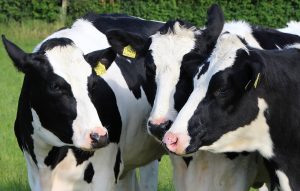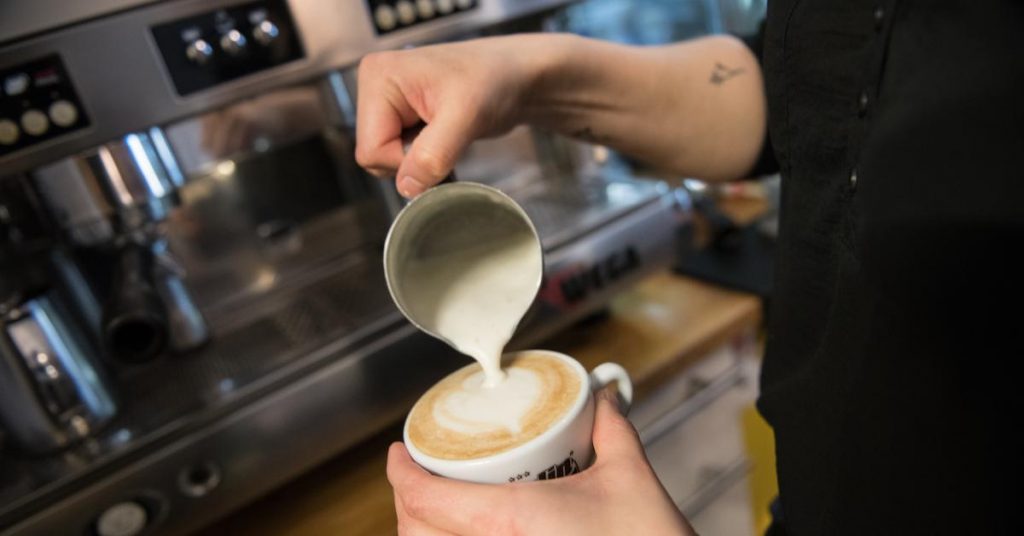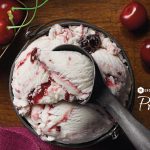
Bananas and hemp. Soy, of course, as well as coconuts, flaxseeds, sunflower kernels, rice, quinoa, and potatoes. On Gawker, Tammie Teclemariam feared her recent discovery of Califia Farms Mushroom Oat Milk Barista Blend had made her lose her mind.
Honestly, I wasn’t thinking about any of this as I traveled around Europe this summer. Instead, I drank icy frappes on the beaches of Greece and stirred foamy café au lait at the bistros of Paris. I was in a simpler, more sensible world, one without an alt mylk or nondairy creamer in sight. The real international delight, I realized, is pouring whole, full-dairy milk into your coffee; it is perhaps the most civilized activity in which a person can partake.
Surely, I thought, I’m not the only person who is realizing how good traditional milk can be? And while sitting at a café in France, I came across this perfect tweet:
I was fascinated, and when I got back to the U.S., I called Meetka, a downtown-based waitress and the author of the above message. “It started happening about two months ago,” she told me. “I noticed that I was using less and less oat milk, and going to the walk-in more and more to get whole milk.” Was this just a case of new customers, or maybe European tourists slowly returning to New York? No, it seems: “Regulars started ordering whole milk and people who I’d assume from the outside were alternative milkers were no longer fulfilling my judgments.”
Obviously, something was up. Why had people so suddenly started to turn their backs on the plant-based blends that were, at least for a time, the coolest possible thing to pour into coffee? Meetka suspects part of the problem might be bad press. “First, almond milk was too bad for the environment,” she theorizes. “Now oat milk is much too oily” — allegedly! — “but whole milk stays true to what we were told as children: calcium is good for you.”
I had to admit she might be onto something. I’ve never been diagnosed with lactose intolerance and I’m not vegan, yet I’ve spent my entire adult life switching between soy creamer, vanilla soy creamer, coconut creamer (the worst), pumpkin-spice oat creamer, Oatly, Planet Oat, and a generic hemp-milk brand from Whole Foods. Mylks have added no peace to my life, only vegetable oil, sugar, and stress when I’m in an airport or sitting at a diner wondering which milk alternative I can realistically order.
I next spoke to Caroline Hesse, a manager and cheese authority at Crown Finish Caves in Brooklyn, about how and why so many of us turned our backs on dairy in the first place, even if it was not medically necessary. Her answer edged on spiritual fulfillment. “There’s this quest for absolution in the foods we eat,” she said. “I think consumers were fed this lie by what I call the Goop Industrial Complex that if you cut dairy from your diet you will have more energy, clearer skin, and you will never ever fart ever again. But the case against dairy ignores many of the complexities of our food system, and I think people are starting to realize that.”
Suddenly my mind flashed through headlines I had seen over the years: Here’s Why Plant-Based Milks Do a Body Good; This Surprising New Milk May Help Prevent Cancer; I Must Have Plant Milk. And Oatly’s not-so-subtle advertising slogan, which is “It’s like milk but made for humans.”
With so many people claiming that alt milks are a path to dietary nirvana, Hesse posits that ordering “real” dairy milk has become an act of quiet rebellion. Hesse told me that she is picking up on a return to dairy via word of mouth. “One friend starts talking to another friend about how the luscious cream-top of full-fat Brown Cow yogurt has changed their mornings forever, and so the domino effect begins.” From there, the whisper network takes off: “I recently met someone who proudly told me that she never swapped out the whole milk that goes into her morning coffee, and I could see everyone’s ears perk up. After such a long time of nobody even considering milk, there is now something taboo and enticing about keeping it in your fridge.”
Home from Paris, I woke up in my New York apartment excited to grab some cow’s milk from my own fridge and put it into my coffee. And then it happened. While waiting for some water to boil, another dairy-glorifying tweet appeared, this time from New York’s darling downtown publicist Kaitlin Phillips:
Intrigued, I clicked over to Abraço’s website to confirm this information, and I was delighted to read the following on their home page: “We haven’t changed our menu much since we opened in 2007. We only serve organic whole milk and half&half.”
I then emailed Phillips about her tweet. She wrote back that afternoon from her Blackberry: “I don’t drink faddish milk alternatives, not that I know anything about milk. Couldn’t say what raw milk or Lactaid milk is, or what ever happened to rice milk,” she wrote. Phillips went on to explain that she had two reasons for not living in London anymore: a breakup, and the lack of half-and-half. “I like Abraço because they take the snobby barista to its logical end: You can’t order anything but half-and-half because they insist you drink coffee the correct way.” Then she added, “Not that I’m a snob. The sweating bottle of Hood half-and-half on the outer edge of an open fridge at the deli appeals to me.”
I watched my milk spin and foam up in its little frother before pouring it into my coffee, and I thought about this summer, which was supposed to be defined by hedonism but has instead been so full of disappointment for so many of us. The vibes are off, there’s fentanyl in the cocaine, and the parties are somehow both desperate and plentiful; we’re all looking to find fulfillment somewhere. Maybe milk, of all things, is an antidote to languishing, or at least a way to remember that we can all do a little less and we’ll be fine.
It reminded me of something Hesse had said at the end of our conversation. “Sometimes, all people need to be convinced that dairy is fine — and even good — is that one friend who made the switch to announce that, after they did, nothing terrible happened to them,” she’d told me. “And once people try it themselves, they realize how hungry they’ve been this entire time.”

























